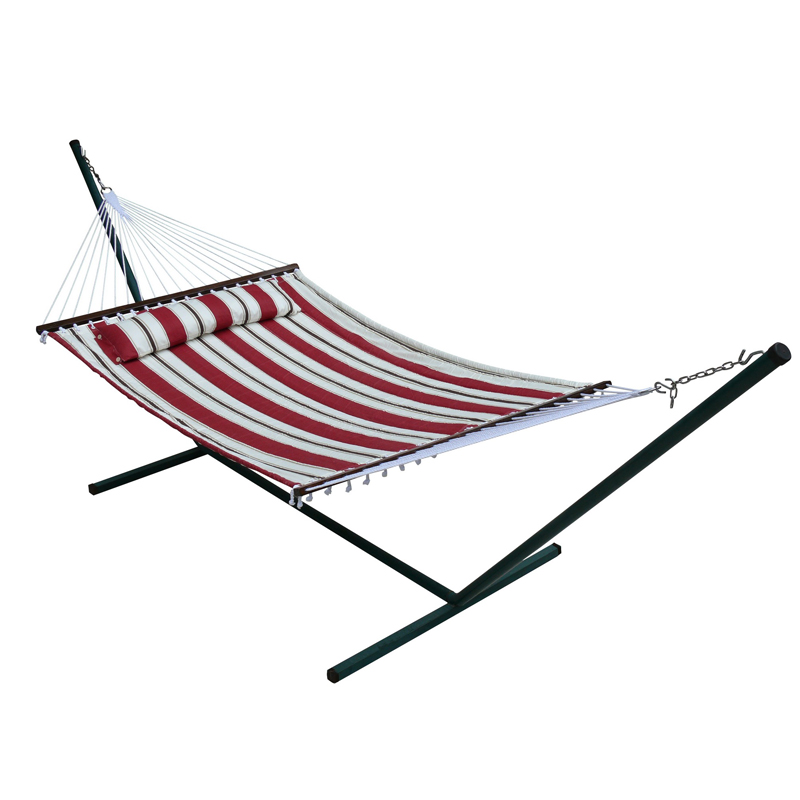Using hammocks comes with loads of benefits. Hammocks are lightweight and easy to set up and move around. Their gentle oscillation would help you relax better and sleep conveniently. These are just a few to mention.
In this article, we will be considering whether a hammock is good for your back.
Follow closely.
Are hammocks good for your back?
Yes, hammocks are good for your back.
Before discussing why hammocks are good for your back, let’s give a snapshot of the anatomy of the back.
The back consists of the cervical, thoracic, lumbar, and sacral spines. The cervical spine is around the neck, and it supports the skull. The thoracic spine is the upper back region and keeps the chest and abdomen.
The lumber spine is the middle to the lower back, supporting body weight. The sacral spine controls the legs and the genital areas.

Why are hammocks suitable for your back?
• Hammocks have flexible surfaces, as they are made with flexible fabrics. These fabrics would conform to your body rather than your body conforming to a harder surface. The fabrics would support the back and prevent pain.
• Hammocks would enable you to sleep with a curved spine. Unlike beds, hammocks have no specific pressure points between the sleep surface and your body. When you sleep in a hammock, you can comfortably spread the pressure over the length and width of your body.
So, there would be equal pressure on all parts of your body. Also, your body parts would sink until it (your body) are fully supported.
Consequently, this would prevent any excess pressure or pain on your back. Extra pressure on the back can cause back pain, and the back can become very sore. Extra pressure also reduces blood circulation to the back. All these effects can give you a bad or not-so-good rest.
Note that modern hammock designs have a spreader bar on the head end and would allow your chest and shoulder area to lay flat.
• Misalignment of spines when shifting around during sleeping is a major cause of nocturnal pain. However, sleeping in a hammock would enclose your body and take any pressure off the spine.
Hammocks offer a more stable sleeping position that prevents and cure back pains. A hammock would not let you roll to your side or stomach–which, of course, can be hurtful to your back.
• The ideal position is to sleep on your back with your head slightly raised. This is precisely what hammocks offer. They offer a natural angle for your back and neck. Sleeping on your back in the hammock enables you to use gravity to keep your body in an even alignment on your spine.
Hammocks prevent you from sleeping on your stomach, as doing such can result in excess pressure on your spine, thereby causing back pain.
Hammocks also prevent side-sleeping. Side-sleeping exerts undue pressure on the back, stomach, and lungs. However, if you are a side-sleeper, you may be wondering if hammocks are suitable for side-sleeping at all. Well, yes, they are. In this case, consider getting a wider and flatter hammock.

Tips to make your hammock comfortable for your back
To prevent back pain or issues, there are tips you should adhere to when using hammocks. We would consider these tips here.
• Lie your body diagonally across the hammock to create more space. You can lie at a 30-45 degree angle with your head and feet resting at opposing sides.
When you sleep diagonally on your hammock, this increases the pressure area, and this better distributes the pressure on your body. Also, this would allow you to stretch out your body so your muscles can relax. Ultimately, this would make the hammock adequately support your back and remove the pain or ache on the back.
• When you sleep, muscles and ligaments in the back (and other parts of the body) tend to relax. When you allow them to spin, this could cause pain in the back (and other parts of the body).
To further protect your back, place a pillow or rolled-up blanket under your knees. This would provide a place for your legs to rest comfortably without giving the spine any unnecessary twist.
• Consider using a pillow to support your neck. If you don’t have a pillow with you, you can use clothes jammed into a stuff sack.
• If you intend to sleep on your hammock, you should readily opt for hammocks with a wider body and flatter bottom. This would guide against back pain. Flimsy or smaller hammocks are not so suitable for sleeping, as they can cause lower back pain.
• Although generally, hammocks are suitable for lying. However, it is advisable not to sit for a long time on hammocks meant for sleeping. Otherwise, this can create a curve and undue pressure on the spine, leading to back pain.
If you like sitting on hammocks, you can opt for a hammock chair.
• If your hammock is too tight, this can cause back pain. So, always hang it in such a way that it’s not tight. Also, avoid sleeping directly at the center of the hammock for long; doing so can cause back pain.
Note that:
• If you have had back issues such as pinched spinal nerve or scoliosis, you should consult your physician when getting a hammock.
Conclusion
Lying in hammocks relieves back pressure. Hammocks enhance the relaxation of the muscles and enable consistent blood flow. They adjust to the body’s contours and give good support to the back (and other parts of the body).
At Jaunty Leisure, you can count on us for top-notch hammocks that would perfectly support your back.

